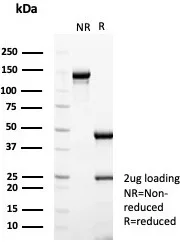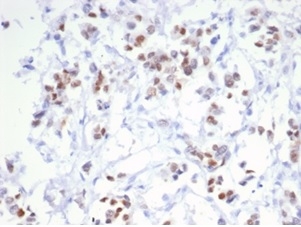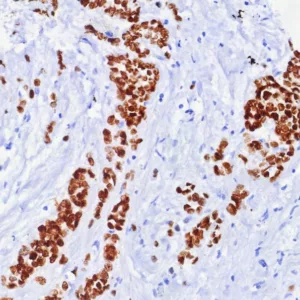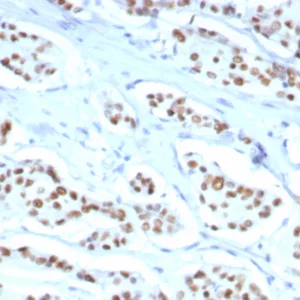Free Shipping in the U.S. for orders over $1000. Shop Now>>

The estrogen receptor (ER) protein is encoded by the gene ESR1 on chromosome 6 (6q25.1). The ER contains approximately 595 amino acids, with a molecular weight of around 66 kDa. Post-translational modifications such as phosphorylation, glycosylation, and disulfide bond formation play critical roles in regulating its activity and stability. ER is primarily an intracellular protein residing in the cytoplasm and nucleus, where it functions as a transcription factor upon binding to estrogen ligands and mediating the effects of these ligands in the body.
Given that the ER modulates gene expression in response to estrogen signaling, it impacts various physiological processes, including development, reproduction, and metabolism. ER is expressed in a wide range of tissues and cells, most notably in the reproductive organs such as the breast, uterus, and ovaries. Various factors, including hormones, growth factors, and environmental stimuli, tightly regulate its expression. Interestingly, dysregulation of ER signaling has been implicated in numerous health conditions, particularly hormone-related diseases such as breast and endometrial cancers. Additionally, mutations in the ESR1 gene or alterations in ER expression levels are associated with tumor progression, metastasis, and resistance to endocrine therapies in breast cancer patients.
Notably, ER expression serves as a marker with both diagnostic and prognostic value, particularly in breast cancer. Immunohistochemistry (IHC) is commonly used to assess ER expression in breast cancer biopsies, with ER-positive tumors classified as hormone receptor-positive and ER-negative tumors as hormone receptor-negative. This distinction informs treatment decisions, as ER-positive breast cancers typically respond well to endocrine therapy such as tamoxifen or aromatase inhibitors. Furthermore, ER expression status is a key determinant of prognosis, with ER-positive tumors generally associated with a more favorable outcome, including slower tumor growth, lower recurrence risk, and improved overall survival rates compared to ER-negative tumors. ER status, alongside other prognostic factors, helps assess the risk of disease recurrence and guides personalized treatment strategies in breast cancer and other hormone-dependent cancers like endometrial and ovarian cancer.
Furthermore, therapeutic agents targeting ER, including monoclonal antibodies and small molecules, have been shown to improve breast cancer therapy. For example, Fulvestrant is an FDA-approved selective estrogen receptor degrader (SERD) that competes with estrogen for ER binding, promoting receptor degradation and is used in postmenopausal women with hormone receptor-positive breast cancer. Additionally, Tamoxifen, a selective estrogen receptor modulator (SERM), blocks estrogen effects by competitive binding and is widely used in ER-positive breast cancer.
NeoBiotechnologies offers a variety of antibodies against ER that have been validated for ELISA, flow cytometry, immunofluorescence, immunohistochemistry, and Western blotting, as well as HuProt validated options. Additionally, we hold exclusive rights to ER antibodies available for licensing or collaboration [https://www.neobiotechnologies.com/shop/?s=ESR1].
Estrogen receptor, ER-alpha, Estradiol receptor, Nuclear receptor subfamily 3 group A member 1, Estrogen Receptor alpha delta 4*5,6,7*/654 isoform; Estrogen Receptor alpha delta 4 +49 isoform; Nuclear receptor subfamily 3 group A member 1
Breast Cancer, Cardiovascular, Infectious Disease, Ovarian Cancer, Signal Transduction, Transcription Factors
Showing 26–30 of 30 results

Showing 26–30 of 30 results
